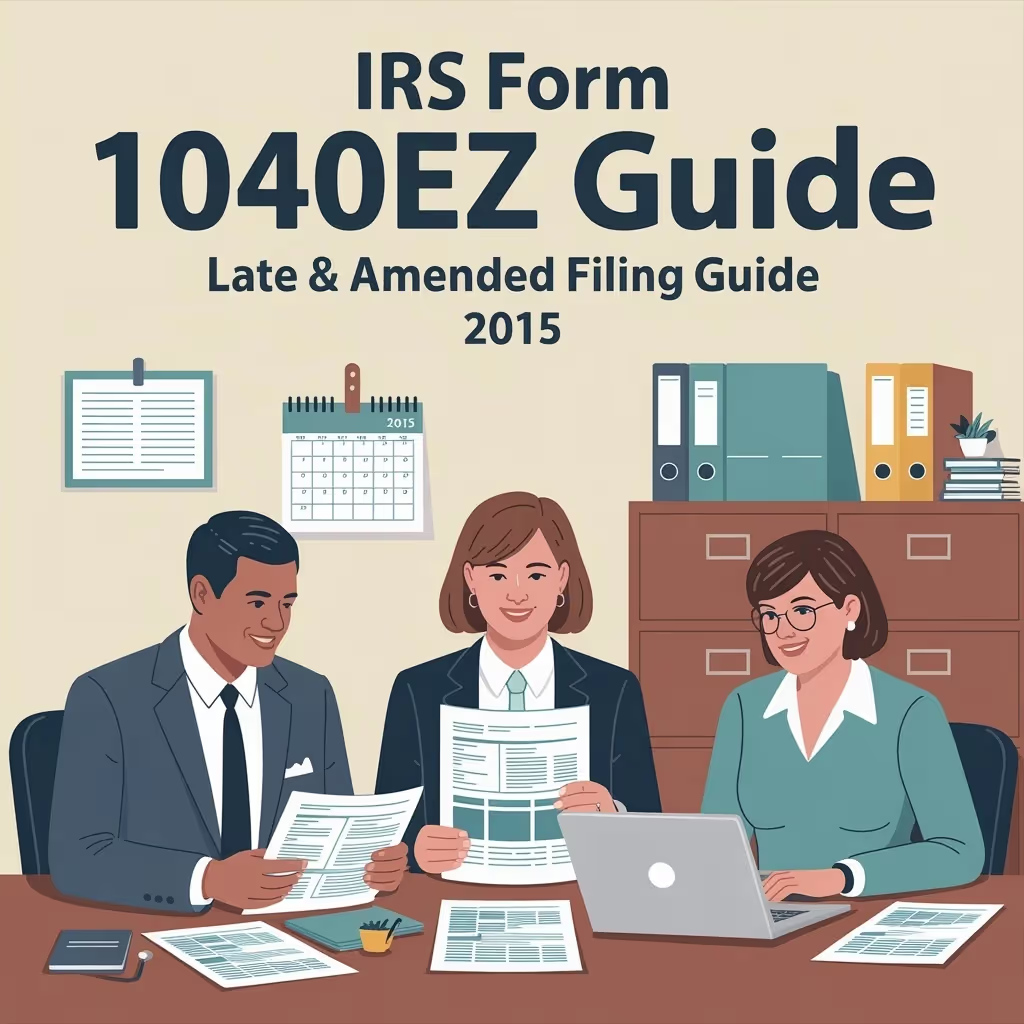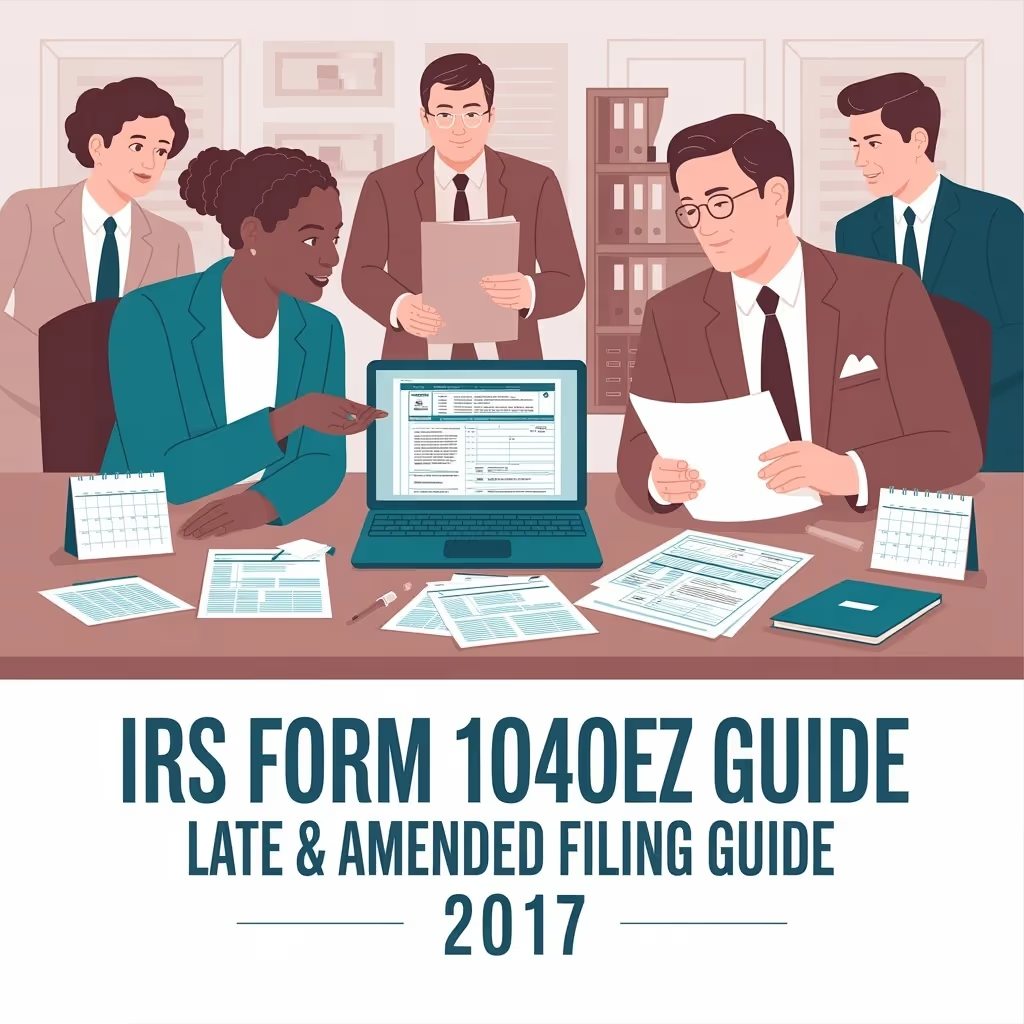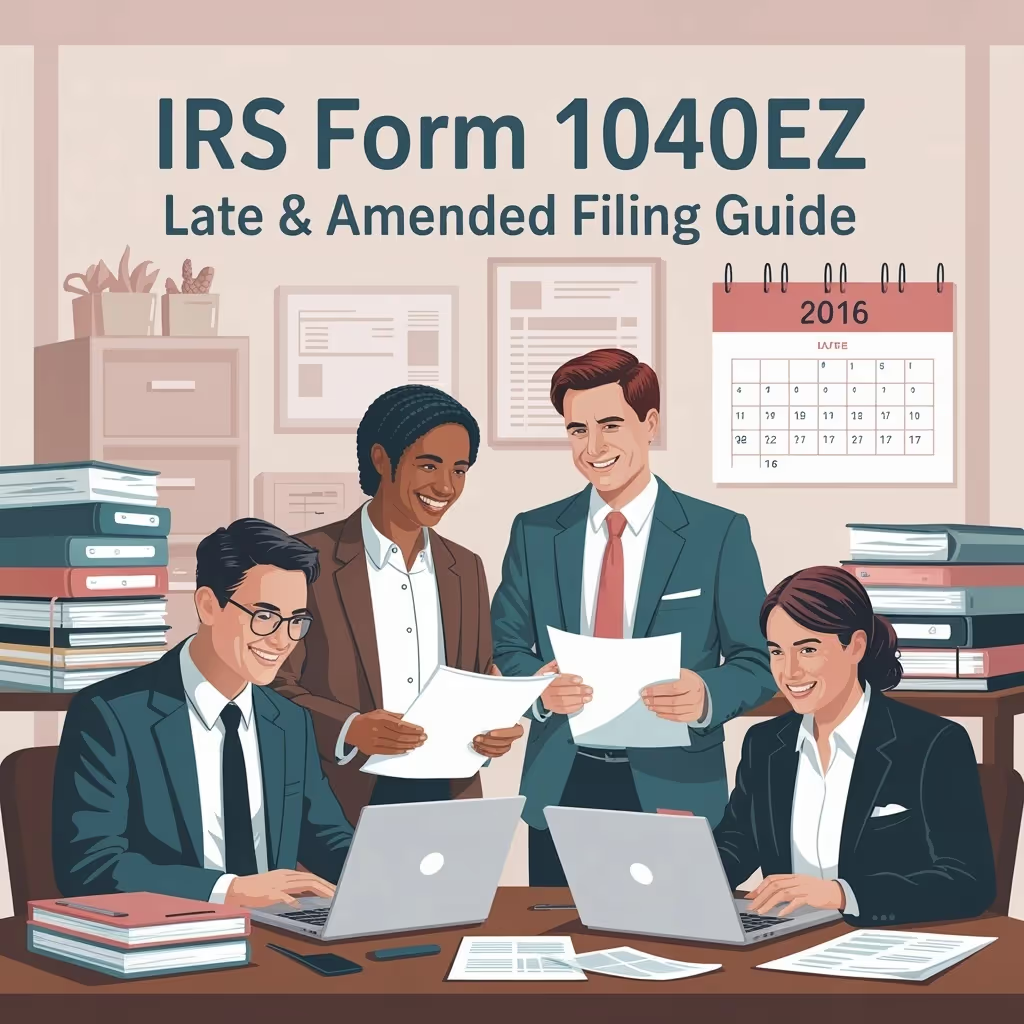IRS Form 1040EZ (2015): Late & Amended Filing Guide

What IRS Form 1040EZ (2015) Is For
IRS Form 1040EZ (2015) was designed for simple tax situations in the 2015 tax year. It applied to single or joint filers under age 65 with no dependents, limited deductions, and a total income of less than $100,000. The IRS allowed only certain types of income, such as wages, tips, interest, unemployment compensation, and Alaska Permanent Fund dividends. This federal form was later replaced by Form 1040 beginning with the 2018 tax year.
The purpose of Form 1040EZ was to simplify the process for individuals who didn’t qualify for itemized deductions or complex tax credits. If you earned only wages and basic interest income, this form was used for filing. You could even receive your refund by direct deposit into your bank account.
When to File or Amend Your 2015 Tax Return
You may still file or amend your 2015 tax return if you never submitted it or if you need to correct errors. Filing late helps you avoid future IRS collection actions and maintain accurate tax records. However, the due date for refunds passed on April 18, 2019, so you can no longer claim a refund for that year. The IRS considers only exceptional cases, such as military service or disability benefits, for exceptions to refunds.
If you owe taxes, filing now reduces penalties and interest. The IRS charges failure-to-file penalties of 5% per month and failure-to-pay penalties of 0.5% per month. Filing sooner stops higher charges and keeps your record in good standing.
Key Rules for the 2015 Tax Year
The original due date for 2015 returns was April 18, 2016, and April 19 for Maine and Massachusetts. That year included new rules for health coverage, requiring most taxpayers to have insurance or pay a penalty. You could use your bank account for refunds, set up a payment plan for balances, or open a myRA account for savings.
Form 1040EZ also introduced options for electronic deposits and certain types of credits, such as the Earned Income Credit (EIC), for low-income workers without dependents. For 2015, social security and disability benefits were partly taxable if your total income exceeded specific thresholds.
Step-by-Step Process for Filing
- Gather Required Tax Information: Request wage and income transcripts at IRS.gov/transcript. Find W-2s, 1099s, and SSA-1099s to report income such as wages, interest, and social security benefits.
- Complete the Form: Use only the official 2015 version of Form 1040EZ and review the IRS instructions. Follow publications for prior year forms to ensure accuracy.
- Verify Eligibility: You must meet all filing requirements—single or married filing jointly, under age 65, and no dependents. Check whether you qualify for certain types of tax credits before you file.
- Mail the Return: Prior year forms cannot be e-filed. Send your completed return to the correct IRS mailing address listed in the 2015 instructions. Use certified mail to avoid delays.
- Keep Records: Store copies of your return, wage statements, and any forms related to loans or deductions. These may be required if you need to prove a filing date or balance in the future.
Learn more about Form 1040EZ and other simplified individual returns to better understand late or amended filing options.
Common Mistakes and How to Avoid Them
- Using the Wrong Form: Many taxpayers use the wrong tax forms for previous years. Only Form 1040EZ (2015) applies for that tax year if you meet eligibility rules.
- Missing Social Security Numbers: Every filer must include valid Social Security numbers for both spouses to qualify for tax credits or refunds.
- Interest or Deduction Errors: Report only allowable interest income and deductions. If your interest exceeded $1,500 or you itemized deductions, you must use Form 1040A or Form 1040 instead.
- Failure to File on Time: Filing late can cause higher penalties. The IRS charges interest daily until your balance is paid in full.
- Incomplete Address or Missing Signature: Always verify the mailing address, date, and signature lines before submitting the form. Errors delay processing and refund delivery.
After You File
Once your return is received, the IRS will process it in about six to eight weeks. You can check the status of your return or refund by contacting the IRS. If you owe a balance, you can pay online through your bank account, by mail, or by setting up a monthly payment plan. The IRS may charge additional penalties if you don’t respond to notices.
If your return includes incorrect tax information, you may receive a letter asking for clarification. Always reply promptly and keep your records. The IRS Office of Appeals allows taxpayers to contest most penalties within 30 days of the date the notice is issued.
FAQs
Can I still receive a refund for 2015?
No, refunds for the 2015 tax year expired after April 18, 2019. Only taxpayers in certain types of special cases, like military combat or disaster zones, may qualify for exceptions.
How can I request my 2015 tax transcripts?
Go to IRS.gov/transcript and use the Get Transcript Online service. You can also call 1-800-908-9946. Be sure to access the official IRS website and verify the presence of the locked padlock icon before entering any personal or financial information.
What if I can’t pay the full amount I owe?
File your return anyway to avoid higher failure penalties. You can apply for an installment plan using Form 9465 or request assistance online. The IRS accepts payments from your bank account or debit card.
Should I also amend my state return?
Yes, if changes to your federal return affect your state taxes, file an amended state return. Each state has its own due date, mailing address, and publications with updated instructions.
Can I use Form 1040EZ for other years?
No, the IRS issues specific forms for each tax year. Use Form 1040EZ (2015) only for that year’s filing. For previous years, download the correct tax forms from irs.gov.
For more resources on filing or understanding prior-year IRS forms, visit our Form Summaries and Guides Library.



























